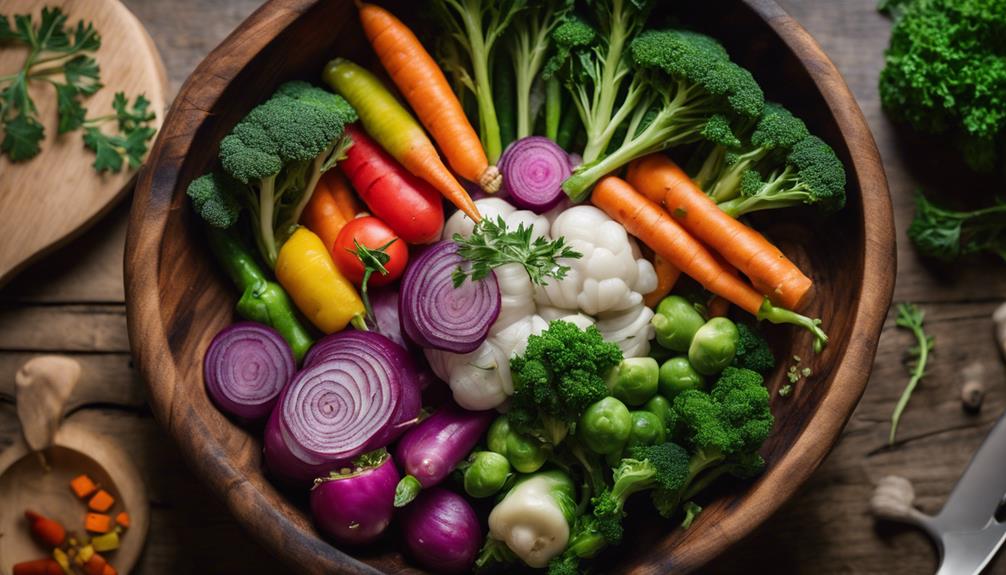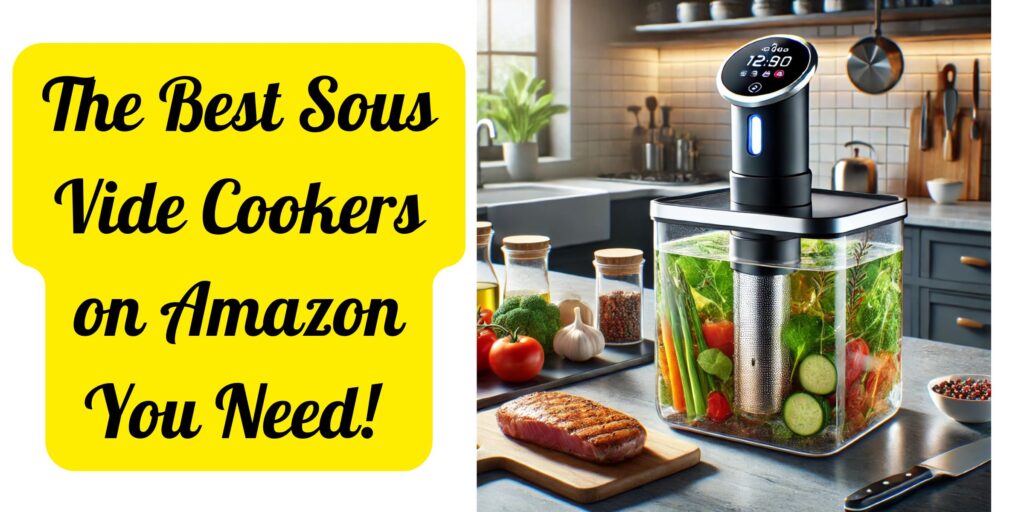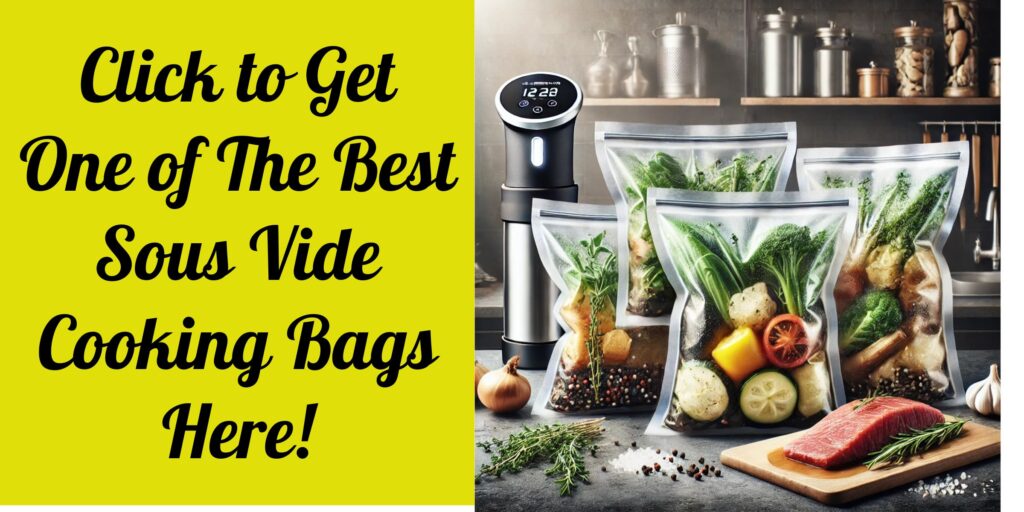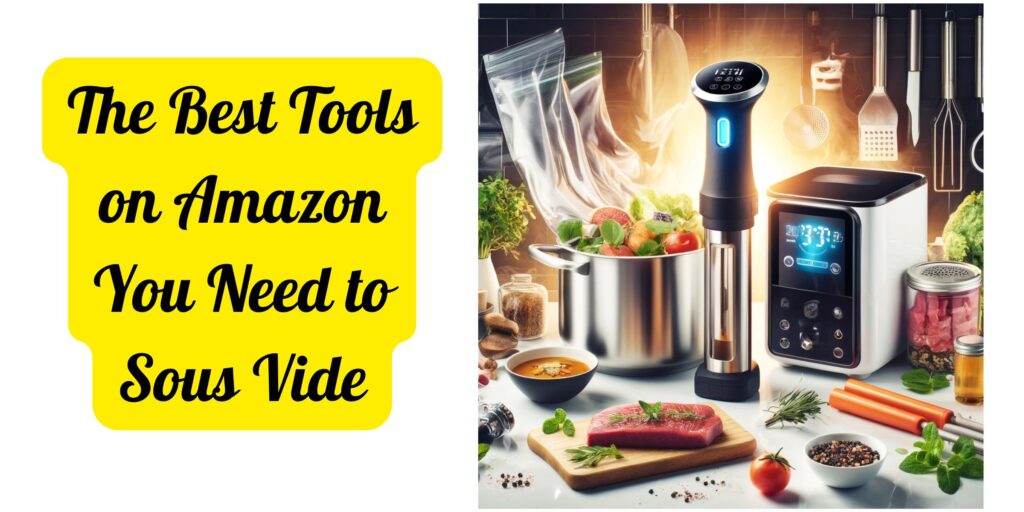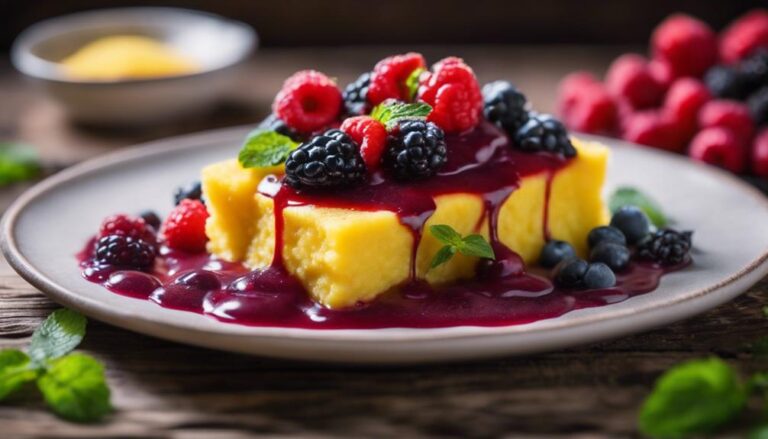Sous Vide Seasonal Vegetable Medley
Hey you, ready to jazz up your veggies? Try a Sous Vide Seasonal Vegetable Medley for a flavor fiesta! Seal those beauties in a bag, let them bathe in a warm water bath, and voilà! Perfectly cooked, juicy, and bursting with flavor. Pick the freshest seasonal veggies, mix for a taste explosion, and support local farmers! Carrots at 85°C, asparagus at 80°C – remember these magic numbers. Adjust cooking times for different veggies. Benefits? Enhanced flavors, time-saving, and healthier eats. Intrigued? Get ready for a culinary adventure with sous vide!
What You Will Learn Here
- Select colorful, in-season vegetables for freshness and flavor balance.
- Use precision temperatures for optimal texture and taste.
- Adjust cooking times based on vegetable type for perfect doneness.
- Support local farmers and reduce carbon footprint by choosing fresh produce.
- Experiment with different vegetable pairings to create a vibrant and delicious medley.
Origins of Sous Vide
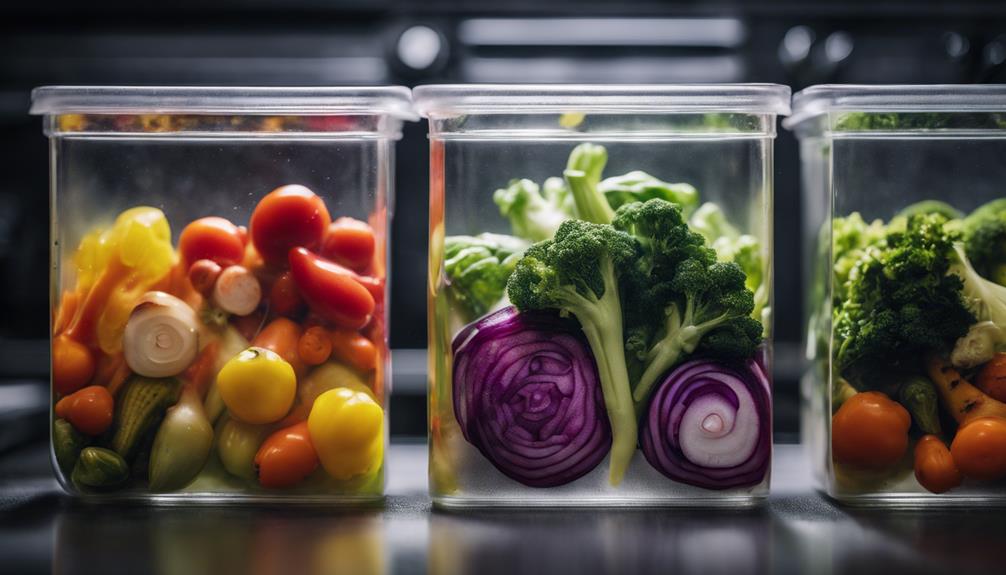
So, you're probably wondering how this fancy-sounding cooking technique came to be, right?
Well, let's break it down for you succinctly.
Sous vide is all about precision – think of it as the chef's secret weapon for nailing that perfect temperature every time.
It's like culinary magic, turning ordinary ingredients into extraordinary dishes with a touch of innovation.
Sous Vide Cooking Method
The sous vide cooking method, originating in France, involves vacuum-sealing food in plastic bags and cooking it in a water bath at precise temperatures for an extended period.
When diving into the world of sous vide, having the right equipment is key. You'll need a sous vide machine to regulate the water temperature, vacuum sealer bags to keep your ingredients snug as a bug, and a reliable kitchen torch for finishing touches.
Now, let's talk benefits. Sous vide is like the fairy godmother of cooking – it keeps your food juicy, locks in flavors, and guarantees everything is cooked to perfection. Plus, it's practically foolproof; even if you accidentally leave your veggies in for an extra minute, they'll still come out tasting divine.
Precision Temperature Control
Understanding the origins of sous vide involves recognizing the significance of precision temperature control in achieving perfect cooking results. Temperature accuracy is essential because it guarantees your veggies are neither overcooked nor underdone.
Imagine the horror of biting into a mushy carrot or a raw broccoli floret – it's a culinary crime! With sous vide, you have the power to avoid such disasters and reach cooking perfection every time. No more guessing games or crossing your fingers, hoping for the best.
Just set the temperature, seal the ingredients, and relax while the magic happens. It's like having a cooking wizard in your kitchen, waving their temperature-controlled wand to create veggie masterpieces. Cheers to science and deliciousness!
Culinary Innovation Technique
Begin a journey through the culinary history that gave rise to the innovative technique of sous vide cooking. Imagine a world where chefs wanted to create dishes with precise control over temperature and flavors. This desire led to the birth of sous vide, a method where food is vacuum-sealed in bags and cooked in a water bath at a consistent temperature. The origins of sous vide date back to the 18th century, but it wasn't until the late 20th century that it gained popularity in professional kitchens. Today, this technique has revolutionized the culinary world, allowing chefs to experiment with innovative recipes and stay ahead of cooking trends. Check out the table below for a quick comparison of traditional cooking methods versus sous vide:
Traditional Cooking | Sous Vide
——————- | ——–
Direct heat transfer | Indirect heat transfer
Less precise control | Precise temperature control
Limited flavor infusion | Enhanced flavor infusion
Skill-dependent outcomes | Consistent results
Seasonal Vegetable Selection
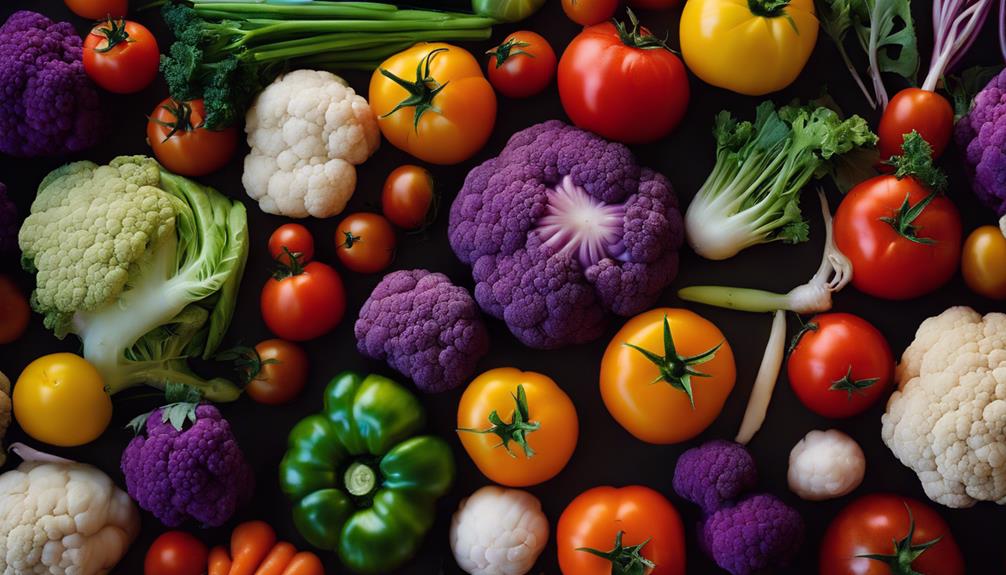
Looking to guarantee your seasonal vegetable medley is bursting with freshness and flavor? Here are three tips to help you make the best seasonal vegetable selection for your sous vide dish:
- Choose In-Season Produce: Opt for vegetables that are in season to guarantee maximum flavor and freshness. Seasonal produce not only tastes better but also tends to be more affordable. Plus, you'll be supporting local farmers and reducing your carbon footprint—talk about a win-win situation!
- Consider Vegetable Pairing: Think about the flavors and textures of different vegetables when creating your medley. Pairing veggies that complement each other can elevate the overall taste of your dish. For example, the sweetness of carrots can balance out the earthiness of beets, creating a harmonious blend of flavors.
- Don't Forget Color: Remember, we eat with our eyes first! Incorporating a variety of colorful vegetables not only makes your dish visually appealing but also ensures a diverse range of nutrients in your meal. So, get creative with your vegetable selection and make your sous vide seasonal vegetable medley a feast for both the eyes and the taste buds!
Top Sous Vide Dishes
So, you're ready to amp up your Sous Vide game and impress your taste buds, huh?
Well, buckle up because we're about to take a delectable ride through some high-quality Sous Vide dishes!
Get ready to tantalize your palate with a mouthwatering Sous Vide Ratatouille, savor the richness of a Vegetable Wellington, and elevate your veggies with a perfect Sous Vide Asparagus.
Time to turn up the heat on your culinary skills!
Sous Vide Ratatouille Recipe
To prepare a delicious Sous Vide Ratatouille, gather fresh vegetables, herbs, and olive oil. Here's what you need to do:
- Variety is the Spice of Ratatouille Life: Experiment with Ratatouille variations like adding a splash of balsamic vinegar or a sprinkle of smoked paprika for a twist on this classic dish.
- Mix and Match Veggie Friends: Ratatouille is the ultimate team player; it pairs beautifully with a variety of vegetable medleys. Try serving it alongside a vibrant seasonal vegetable mix or a hearty root vegetable mash.
- Herbs to the Rescue: Don't forget the power of herbs! Fresh basil, thyme, or rosemary can elevate your Ratatouille to new heights of flavor.
Vegetable Wellington Recipe
For a delectable twist on classic Wellington, explore the world of Vegetable Wellington prepared using the sous vide technique. Whether you're a veggie enthusiast or just looking to spruce up your dinner party, this dish is sure to impress.
Here are some tips to elevate your Vegetable Wellington game:
- Vegetable Wellington Variations: Get creative with your fillings! From hearty mushrooms to colorful bell peppers, the options are endless. Mix and match to find your perfect combination.
- Veggie Wellington Presentation Ideas: Don't forget about presentation! Brush your Wellington with a glossy glaze, sprinkle some fresh herbs on top, or add a decorative pastry design to give it that extra flair.
- Serving Suggestions: Pair your Vegetable Wellington with a side of creamy mashed potatoes or a crisp green salad for a well-rounded meal that will have everyone asking for seconds.
Sous Vide Asparagus Recipe
Enhancing the natural flavors of asparagus, sous vide cooking offers a delightful way to create tender and perfectly cooked spears every time. So, you want to take your asparagus game to the next level? Here are some tips for your sous vide adventure:
- Asparagus Variations: Try different types of asparagus like green, purple, or white for a colorful twist. Each variety brings a unique flavor profile to the dish.
- Sous Vide Techniques: Set your sous vide machine to 185°F (85°C) for a crisp-tender texture or 200°F (93°C) for a softer bite. Experiment with different cooking times to find your perfect spear consistency.
- Seasoning Savvy: Don't forget to season your asparagus before vacuum-sealing it. A sprinkle of salt, a dash of pepper, and a drizzle of olive oil can work wonders!
Sous Vide Timing Tips
Alright, let's talk timing!
When it comes to sous vide, nailing the ideal cooking temperatures is key. Adjusting your cooking times can make all the difference between a perfectly cooked dish and a disappointing one.
Ideal Cooking Temperatures
To achieve the best results when cooking your seasonal vegetable medley sous vide, it's essential to carefully consider the vital cooking temperatures and timing tips.
Temperature accuracy is pivotal in sous vide cooking. Make sure your water bath stays at the precise temperature indicated in the recipe. When it comes to cooking techniques, remember that different vegetables may require varying temperatures to reach the perfect texture.
Carrots might like it warm and cozy at 85°C, while asparagus prefers a slightly cooler 80°C soak. So, pay attention to those numbers! Understanding these ideal cooking temperatures will help you master the art of sous vide vegetable medleys and impress your taste buds with perfectly cooked veggies every time.
Cooking Time Adjustments
When adjusting cooking times for your sous vide vegetable medley, make sure to achieve peak results with precision. Remember, temperature accuracy is key to getting those perfect cooking results. But hey, don't stress about it too much – we're just cooking veggies, not defusing a bomb! Below is a handy table to help you nail down the cooking time for different vegetable textures. Keep it simple, follow the guidelines, and you'll be a sous vide pro in no time!
| Vegetable | Texture | Cooking Time |
|---|---|---|
| Carrots | Crunchy | 185 minutes |
| Broccoli | Tender-crisp | 140 minutes |
| Potatoes | Soft | 200 minutes |
| Asparagus | Tender | 120 minutes |
| Bell Peppers | Firm | 160 minutes |
Precision in Cooking
For best results in sous vide cooking, precise timing plays a key role in achieving the desired textures for different vegetables.
When it comes to temperature accuracy, think of your veggies as delicate beings that need just the right amount of heat to shine.
Cooking perfection is all about hitting that sweet spot where your asparagus stays crisp, but your carrots are tender – it's a fine balance, my friend.
So, set those timers with care, and remember, a few minutes can make all the difference between a veggie medley that wows and one that's just meh.
Trust the process, stay vigilant with your timings, and soon you'll be whipping up sous vide masterpieces like a pro!
Final Thoughts
As you reflect on the culinary journey of preparing this Seasonal Vegetable Medley Sous Vide, consider the harmonious blend of flavors and textures you've achieved. The benefits of using sous vide for this dish are truly remarkable. The future trends of cooking are leaning towards precision and convenience, which sous vide perfectly embodies.
Let's take a look at the final thoughts on your sous vide adventure:
| Final Thoughts |
|---|
| Precision cooking |
| Enhanced flavors |
| Time-saving |
| Healthier option |
| Trendsetting technique |
The precision cooking aspect of sous vide really shines through in how each vegetable retains its individual taste and texture while also melding together beautifully with the others. The enhanced flavors you've captured in this dish are a reflection of the benefits of sous vide. Not to mention the time-saving element and the healthier outcome of cooking vegetables at precise temperatures. Embracing this trendsetting technique in your culinary repertoire surely sets you on the path to becoming a kitchen superstar!
Frequently Asked Questions
Can Sous Vide Be Used for Desserts or Sweet Dishes?
Yes, Sous Vide can be a game-changer for sweet treats. With precision cooking, you'll discover a world of dessert options from custards to cheesecakes. The gentle, even cooking of Sous Vide guarantees deliciously consistent results every time.
How Can I Prevent Vegetables From Becoming Overcooked?
To prevent vegetables from overcooking, control texture and retain flavor by mastering time and temperature precision. Sous vide guarantees perfect doneness without loss of nutrients. With proper technique, your veggies will always be delicious.
Are There Any Safety Concerns When Cooking With Sous Vide?
When cooking sous vide, always prioritize temperature control to minimize the food poisoning risk. Guarantee your water bath is accurately set to the recommended temperature for the desired doneness of your ingredients. It's essential for safe cooking.
Can I Use Frozen Vegetables in Sous Vide Cooking?
Yes, you can use frozen vegetables in sous vide cooking. Fresh vs frozen vegetables in sous vide vary in texture. Adjust sous vide cooking times for frozen vegetables by adding 10-15 minutes to guarantee proper doneness.
What Are Some Creative Ways to Season Vegetable Medleys?
Get creative with your veggie medleys! Combine flavors like garlic and herbs for tasty twists. Use techniques like roasting or sautéing to enhance the natural taste. Your meals will be bursting with deliciousness!
Conclusion
So there you have it, folks! Sous vide cooking may sound fancy, but it's really just a cool way to make delicious food with minimal effort.
Whether you're a seasoned chef or just starting out in the kitchen, this method is sure to impress your taste buds.
So grab your veggies, fire up that sous vide machine, and get ready to elevate your cooking game to a whole new level.
Happy cooking!
